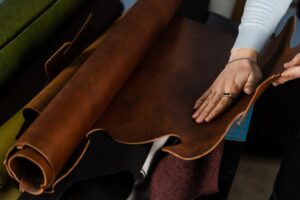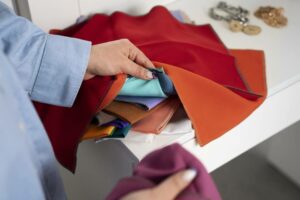In the realm of home furniture, pocket springs are a symbol of comfort. They have applications in diverse products ranging from baby cots to car seats. Pocket spring is ideal for manufacturing everything, including this article’s main topic: sofa.
If you are considering incorporating them into your production line, this definitive guide to pocket spring sofas is just for you!
What Are Pocket Spring Sofas?
Pocket springs are individual springs made of high-tensile steel encased in individual cloth pockets. They first found their way into high-end mattresses. However, manufacturers now use pocket springs in cushions and sofas due to their rising popularity.
In addition, each pocket spring operates independently, responding to pressure individually. Unlike foam, where applying pressure to one area will affect the surroundings, pocket springs keep everything neatly in one space.
This unique arrangement minimises motion transfer, providing a superior seating experience. Thanks to this ingenious design, pocket spring sofas offer exceptional comfort and targeted support and are desirable for any setting.
Advantages of Pocket Spring Sofas
Pocket spring furniture contours to body shapes and evenly distribute weight because of its independent springs. This functionality helps alleviate pressure points in the hips, shoulders, or knees and maintains natural spinal alignment.
Moreover, pocket-sprung sofas are perfect for multi-person households, given their excellent motion isolation properties. With it, you don’t have to worry about disturbing a seated family member or roommate while moving around on the sofa.
Furthermore, their breathability and superior heat regulation compared to foam sofas make them even more appealing. Each spring facilitates air circulation and heat dissipation, resulting in a cooler seating experience.
Potential Drawbacks of Pocket Spring Sofas
Although pocket spring sofas offer various benefits, they also have one main drawback. Due to the steel used in the springs, these sofas can be relatively heavy. This makes for a more difficult time when moving or rearranging.
Variations in Pocket Spring Sofas

Pocket spring sofas offer a range of variations, catering to unique needs and preferences. Some key factors include:
Spring Counts and Their Implications
The spring count refers to the number of pocket springs in a sofa. Higher spring densities usually provide enhanced support and a firmer seat, while lower densities offer a softer and more relaxed feel.
Different Types of Pocket Springs
1. Synthetic Spun Bond Pocket Springs
With spun-bond pocket springs, each spring is individually encased in a nonwoven material bag before being heated-glued into its pocket.
The artificial fabric is then stitched with hot glue to construct the sofa’s core from each row of pocket spring lengths.
2. Calico Pocket Springs
A fibre with good breathability is calico or cotton. In other words, a sofa composed of natural fibres will be significantly cooler than a sofa made of memory foam.
Due to the calico pocket spring’s superior flexibility compared to polyester options, the spring support is greatly more responsive.
Choosing the Right Pocket Spring Sofa
When choosing a pocket spring sofa, consider the following factors:
- The intended use (sitting or lying down)
- The user’s body weight
- Preferred sitting positions
- Personal comfort preferences
- Design of Sofa
Luckily, pocket spring sofas are more durable and come in many designs these days. Thus, pocket spring sofas can be perfectly tailored to everyone’s needs.
Caring for Your Pocket Spring Sofa
Moreover, maintaining a pocket spring sofa is relatively straightforward.
Regular rotation and vacuuming of the cushions help to distribute wear evenly and maintain the sofa’s cleanliness. Alternatively, consider using and replacing cushion covers periodically.
Environmental Impact and Sustainability

Pocket spring sofas are generally more environmentally friendly than their foam counterparts.
The production process consumes fewer raw materials and energy, primarily due to the recyclability of steel used in the springs. In contrast, foam is made from non-recyclable petroleum, which requires more raw materials and energy.
Furthermore, the durability of pocket spring sofas means longer usage periods, which ultimately reduces waste and contributes to sustainability.
Conclusion
The intricacies of sofa construction, including the introduction of springs, have transformed these household staples into a complex yet comfy piece of furniture.
If you’re looking for a reputable supplier of top-quality sofa fabrics, pocket springs, and other upholstery materials, Kintex is your one-stop solution. Visit Kintex to explore our range of products and services tailored to meet your personal needs.







